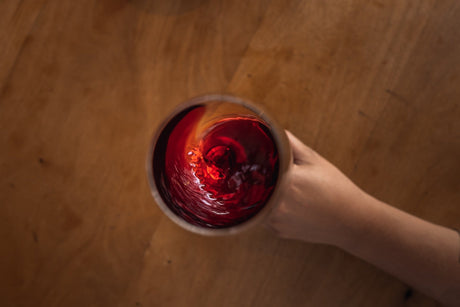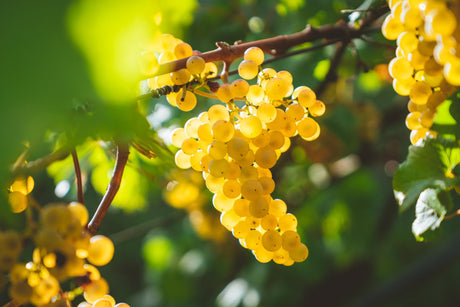
Mastering The Art of Decanting Wine: A Beginner's Guide
Don't be intimidated by decanting wine - it's not just for snobs! Learn why and how to do it with this fun, beginner-friendly guide from Your Wines. Cheers to better-tasting...
Piccini
Villa Al Cortile Brunello Di Montalcino DOCG 2006 (6 Bottles)
Shut the Gate
Shut the Gate Ripple Iron Sangiovese 2022 (12 Bottles)
Tenute Rossetti
Tenute Rossetti Governo All'Uso Toscano Rosso Toscano IGT 2020 (6 Bottles)
Piccini
Piccini Antica Cinta Series Chianti Riserva DOCG 2020 (6 Bottles)
Piccini
Piccini Orange Label Series Chianti Flask 2023 (12 Bottles)
Piccini
Piccini Orange Label Series Chianti Bottle DOCG 2023(6 Bottles)
Gapsted Estate
Gapsted Estate Alpine Road Sangiovese Barbera (12 Bottles)
Cantina Viticoltori
Cantina Viticoltori Senesi Aretini Chianti Riserva DOCG 2020 (12 bottles)
Cantina Etrusca
Cantina Etrusca Chianti DOCG 2021 (6 bottles)
Cantina Etrusca
Cantina Etrusca Chianti Classico DOCG 2019 (6 bottles)
Tash & The Thief Wines
Tash. Sangiovese (Adelaide Hills) 2023 (12 Bottles)
Piccini
Villa Al Cortile Brunello Di Montalcino Riserva DOCG 2004 (6 Bottles)
Piccini
Villa Al Cortile Brunello Di Montalcino Riserva DOCG 2010 (6 Bottles)
Piccini
Villa Al Cortile Brunello Di Montalcino Riserva 2012 (6 Bottles)
Piccini
Villa Al Cortile Brunello Di Montalcino DOCG 2018 (6 Bottles)
Valiano
Valiano Poggio Teo Chianti Classico Riserva DOCG Organic 2019 (6 Bottles)
Valiano
Valiano Poggio Teo Chianti Classico DOCG Organic 2019 (6 Bottles)
If you are looking for a versatile red wine, Sangiovese is worth adding to your list. This Italian grape variety has become increasingly popular globally, praised for its vibrant acidity, moderate tannins, and complex flavour profile. So, let's explore Sangiovese together!
Sangiovese is a red wine grape variety that originated in Italy and is well-known for producing wines with bright acidity, moderate tannins, and flavours ranging from cherry and strawberry to earthy and herbal notes.
Sangiovese red wine stands out for its vibrant acidity and versatile flavour profile. It often showcases red fruit characteristics such as cherry, along with herbal and earthy undertones.
Sangiovese wine is known for its bright acidity and wide range of flavours, including red fruits like cherry and strawberry and herbal, earthy, and sometimes spicy notes. Depending on the region, the wine can take on more specific characteristics, such as leather, tobacco, or cedar.
Sangiovese originated in Italy, specifically the Tuscany region, and is now grown worldwide. However, Italy remains the largest producer of Sangiovese, accounting for over 80% of the world's production. Tuscany has become synonymous with Sangiovese wine, especially Chianti, Montepulciano, and Brunello di Montalcino. Besides, the Sangiovese grape is widely planted in Italy's central and eastern regions and has become increasingly popular in California, Argentina, and Australia.
Traditionally, Sangiovese wine is served at a cool room temperature of around 55 degrees Fahrenheit. However, lighter-bodied Sangiovese like Chianti Classico or Sangiovese Rosé can benefit from spending an hour or so in the refrigerator, which amplifies their refreshing qualities. Chilling also allows the acidity and fruity notes to shine, making it an excellent pairing for summer dishes such as grilled veggies, seafood, or pasta salads.
Sangiovese is pronounced, "san-joh-VAY-zeh." The emphasis is on the second syllable, and the "e" at the end is pronounced like "ay."
The King Valley in Victoria is recognised as one of the best regions in Australia for Sangiovese. The cool climate and diverse soils contribute to wines with vibrant acidity and expressive fruit flavours.
Australian Sangiovese wines, particularly from regions like the King Valley, may showcase similar varietal characteristics to Italian Sangiovese. However, regional differences in climate and winemaking practices can result in unique expressions of the grape.
Sangiovese tends to be more acidic with red fruit flavours and herbal notes, while Grenache is known for its bold, fruit-forward profile, often featuring red and black fruit with a hint of spiciness. Sangiovese is generally lighter in body compared to Grenache.
Sangiovese offers bright acidity, red fruit flavours, and a lighter body, while Shiraz tends to be bolder with dark fruit and peppery notes. Sangiovese is more reminiscent of Old World elegance, while Shiraz is known for its New World richness.
Sangiovese is characterised by its bright acidity, red fruit flavours, and moderate tannins, while Cabernet Sauvignon is known for its bold structure, dark fruit profile, and higher tannin levels. Sangiovese wines are generally lighter compared to the robust Cabernet Sauvignon.
Sangiovese can age well, especially higher-end wines like Brunello di Montalcino and Chianti Classico Riserva. Properly cellared Sangiovese can develop complexity, tertiary flavours, and a smoother texture over time.
Sangiovese's versatility makes it an excellent pairing with Italian cuisine, including pasta, pizza, and dishes with tomato-based sauces. It also complements grilled meats, roasted vegetables, and dishes featuring herbs like rosemary and thyme. You can learn more about Sangiovese food and wine pairings in our blog here.
Sangiovese wine is a unique and popular Italian grape variety with a rich history, widespread growth, and diverse flavours. Its high acidity level and moderate tannins make it an alluring choice for pairing with various foods or drinking independently. Whether you're a seasoned wine enthusiast or a newbie, trying Sangiovese wine should be on your wine bucket list for a good reason!

Don't be intimidated by decanting wine - it's not just for snobs! Learn why and how to do it with this fun, beginner-friendly guide from Your Wines. Cheers to better-tasting...

Bored with the same old Pinot Noir? These five alternative red wines share some characteristics of your favourite Pinot but also bring something new to spice things up. Cheers to...

Want to impress your friends with some fancy wine tricks? Look no further! From quick chilling methods to uncorking without a corkscrew, these clever tips will elevate your wine game....

Spice up your New Year's Eve celebrations with our list of the best sparkling wines Australia has to offer. From crisp and refreshing to full-bodied and complex, find your perfect...

Who says sparkling wine is just for special occasions? Discover 5 fun and unexpected pairings that elevate your everyday Aussie snacking experience. Cheers!

Join us on an adventure to uncover the history and allure behind Australia's love for Shiraz. From its bold flavours to its global recognition, discover why this wine reigns supreme...

Are you a Chardonnay lover looking to expand your wine horizons? Check out these top five alternative white wines that are sure to impress your palate and liven up any...

Who says celebrations have to be expensive? Check out these five pocket-friendly sparkling wine suggestions that will make your taste buds dance. Perfect for holidays, special occasions, or just a...

Get ready to sip your way into summer with these amazing wine pairings for seafood dishes! Find out which wines will perfectly accompany all your favourite dishes.